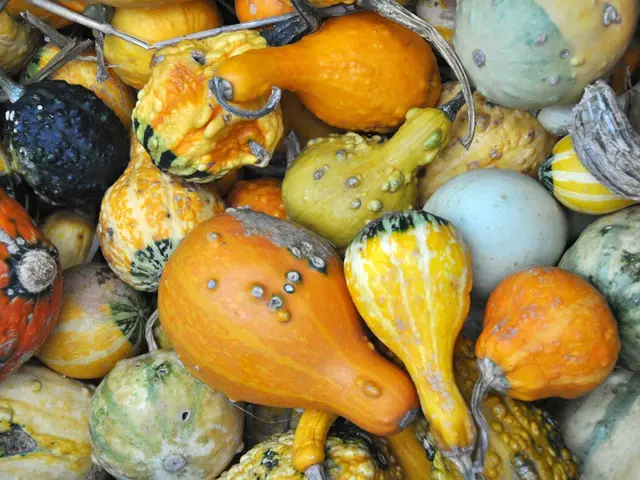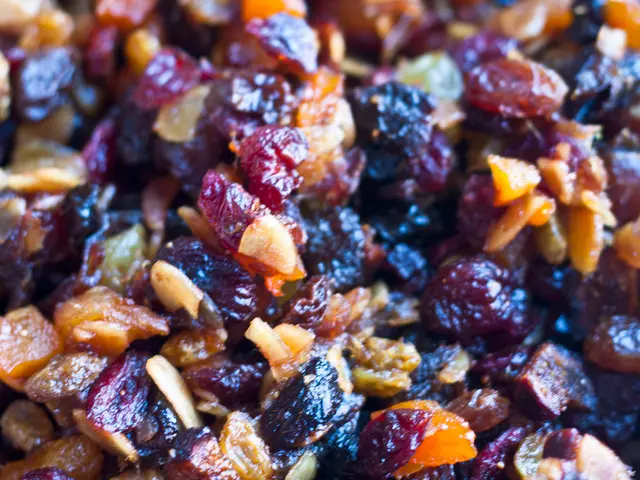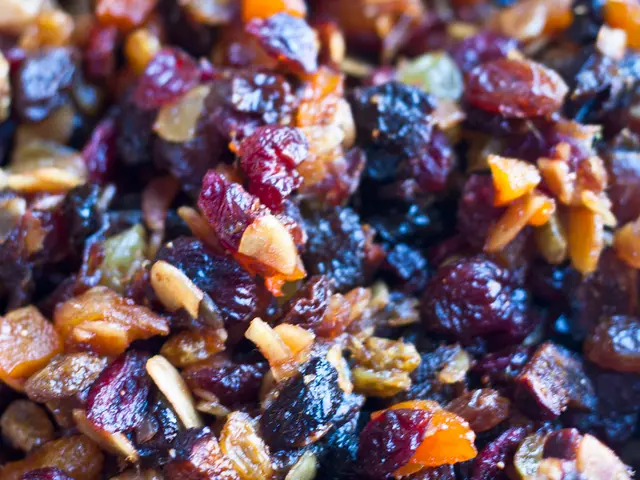Exceptional Advantages of Nine Distinct Varieties of Lentils: A Comprehensive Exploration
Lentils, a humble legume, are a powerhouse of health benefits! These tiny, lens-shaped seeds are a yearly crop found popularly in India and Canada. Nicknamed 'Dal' in Hindi, lentils are a staple in Indian meals.
Lentils offer a myriad of advantages, making them perfect additions to your kid's diet. Here's why you should include lentils in their meals:
Richest Source of Proteins: Lentils boast high protein content, which is vital for building muscles and generating and regenerating cells in the body. One cup of cooked lentils provides a whopping 18 grams of protein, catering to nearly 90% of your kid's daily protein needs as a vegetarian family.
Aids digestion: Fuel your child's gut with lentils! These legumes are rich in prebiotic fiber, promoting digestive function and benefiting beneficial gut bacteria.
Potential Chronic Diseases Reduction: Lentils flaunt the highest total phenolic content, compared to other legumes. This polyphenol-rich property aids in reducing chronic diseases such as diabetes, obesity, cancer, and heart disease.
Heart-healthy: Lentils are a treasure trove of fiber, folate, potassium, and iron, making them an ideal choice for their little hearts. These nutrients help maintain a steady heartbeat and manage blood pressure and cholesterol levels.
Lentils come in a variety of colors and slightly different shapes, such as:
Green Moong: Packed with proteins, Green Moong is a great source of fiber, folate, magnesium, copper, and vitamin B. Sprouting green moong is the way to go!
Yellow Moong Dal: In addition to proteins, Yellow Moong Dal is abundant in iron and potassium and is easily digestible. It can be used in making khichadi, their first solid meal, combined with rice for babies.
Arhar or Toor Dal: Rich in various nutrients like iron, folic acid, magnesium, calcium, Vitamin B, and potassium, Arhar Dal is a powerhouse for your child's growth and development.
Urad Dal: Urad Dal is great for digestion and lowers cholesterol levels. Its gooey texture and delicious taste make it a kids' favorite.
Masoor Dal: Available in both black and orange color, Masoor Dal is versatile and an excellent source of fiber, iron, and vitamin B1 for your child.
Lobia or Black-eyed Peas: Originating from West Africa, Lobia is rich in fiber, aiding digestion and keeping your child feeling fuller. It also has high protein content, making it a must-have in your child's diet.
Matar Dal: Matar Dal, with its versatile cooking methods, is a good source of protein and fiber. It also contains essential vitamins like Vitamin B1 and Vitamin B5.
Chickpea/ Bengal Gram/ Chana Dal: This dal comes in two forms: Kala Chana (dark skin) and Kabuli Chana (large white). Rich in fiber, folate, molybdenum, manganese, copper, protein, iron, and zinc, Chana Dal is a fantastic addition to your child's diet.
KULTHI DAL/ Horse Gram: High in carbohydrates, calcium, and low in fat, Horse Gram is perfect for those dealing with diabetes or obesity.
Start giving lentils to your little one from 6-8 months old once they start consuming foods other than milk. To minimize gas problems, serve lentils in a watery form or create lentil purees with added vegetables. Including lentils in your child's diet will ensure proper growth and development, as well as contribute to a balanced diet.
- Lentils, rich in proteins and other essential nutrients, can significantly contribute to your child's growth and development, making them a crucial part of a healthy-cooking lifestyle and a balanced food-and-drink diet.
- Aside from their nutritional benefits, lentils like Green Moong, packed with fiber, folate, magnesium, copper, and vitamin B, can aid in proper brain development, promoting a holistic approach to your child's health-and-wellness.
- By incorporating lentil dishes into your child's culture, such as khichadi made with Yellow Moong Dal, you're not only teaching them about their heritage but also nurturing their bodies with essential nutrients like iron and potassium.
- The polyphenol-rich property of lentils can help reduce the risk of chronic diseases like diabetes, obesity, cancer, and heart disease, ensuring a disease-free future for your child while they enjoy the taste of Lentils in their nutritious meals.
- Cooking with lentils goes beyond just providing nutrition; it’s about instilling a love for food-and-drink that prioritizes health-and-wellness, brain development, and the overall lifestyle of your child, fostering a positive relationship with food from an early age.








